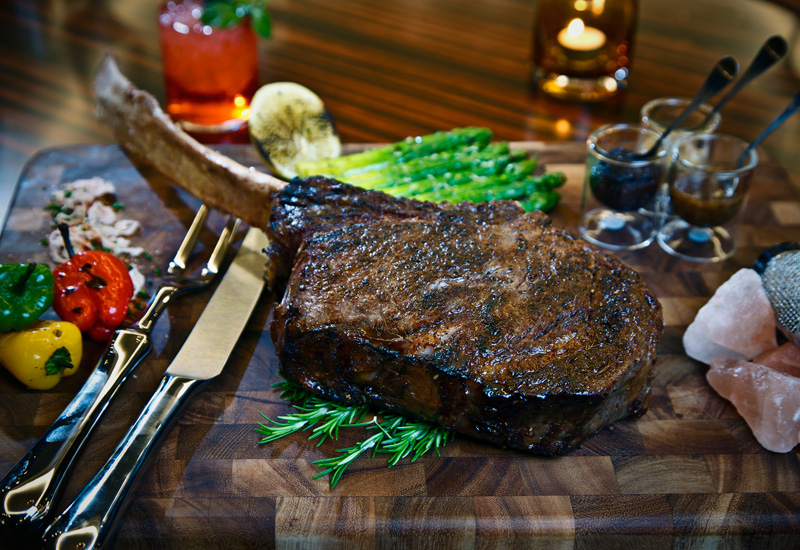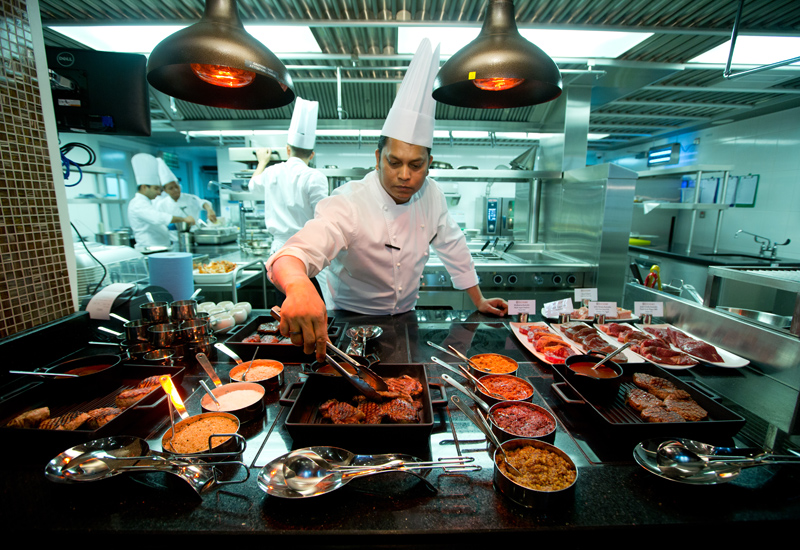What challenges do you face with steaks?
Pereira: Demand from our customers for both a high quality and value-for-money dining experience. This means that we spend more time than ever sourcing the best steaks available that enable us to meet these criteria. An equal amount of time is then spent treating, preparing and cooking the meat to optimise flavour and retain client loyalty.
Dahlkemper: Product is a constant trial and tribulation as we will only serve the highest quality premium cuts, and we must reassure customers that the products and price are in line. You get what you pay for.
Voelzing: Sourcing the best and consistent produce in the region are challenges. As we dry-age our beef we have a massive time frame and yield variation that can be difficult to work with.
Heaton: As with any food product, consistency is always the big issue, so you have to develop great relationships with your suppliers.
Ferreira: People are often unaware of the correct temperatures steak should be eaten at. When someone orders a full blood wagyu well done, a little part of the chef’s soul dies. This is such a great piece of meat that when we have to cremate it, we weep. People are becoming more aware but it’s definitely the job of the servers and chefs to help educate the public about how the variations in the temperature of a steak can completely change the flavour and texture.
Voelzing: When it comes to importing chilled products there are challenges that vary enormously between the GCC countries. Forecasting needs to be precise and exact, and documentation and freight delays can cause havoc. Quality and consistency issues can be eliminated by purchasing the right product from larger reputable producers.
Mohan: The biggest challenge with the ever growing popularity of good meats is the increase in the prices for the same. In addition to this, increasing competition is definitely a positive challenge in Dubai, as it pushes us to think innovatively and see what is currently in demand.
How’s the supply stream?
Pereira: Our beef is imported from the US, Canada, Australia and Ireland, and we have three deliveries per week. I also have stock on hand for those extra-busy lunches or evenings, as well as a reserve of dry-aged meat. We work with several reputed Dubai-based suppliers to ensure that the supply chain runs smoothly.
Voelzing: Our meat is imported from all over the world: Spain, the US, Ireland and Australia.
Dahlkemper: I source our meat from Creekstone Ranch, which has cattle across the mid-western region of the US — it is a personal favourite of mine. Australia also produces great cattle, so I like to test out Australian meat to ensure that we are constantly inspecting other markets and making sure we have the best of the best.
Ferreira: We import all our beef products. When importing, consistency can vary. One week you receive a great product that has been aged correctly and the marbling profiles are incredible, then a week later you can receive the same beef but it’s been slaughtered too young and not allowed to age for long enough.
Rocher: In the UAE, we are fortunate with the top quality meat we can source. Our main meats are prime American, Australian (Wagyu), New Zealander, Argentinian and Irish. We are also introducing Kobe from Japan in May’s menu. The supply stream is very good in Dubai.
Kohler: In most GCC countries there are good local importers. In others, we import directly from producers in South Africa.
Heaton: We import some meats and also look at the local market. We like to give guests variety: our steaks are from Canada, the US, Australia and Japan.
Mohan: We buy our meats from local suppliers, who source the meat from different locations, primarily from the US and Australia, which are two of the best cattle resources. Some specialty cuts also come from New Zealand and Japan.

| Advertisement |










 Search our database of more than 2,700 industry companies
Search our database of more than 2,700 industry companies









